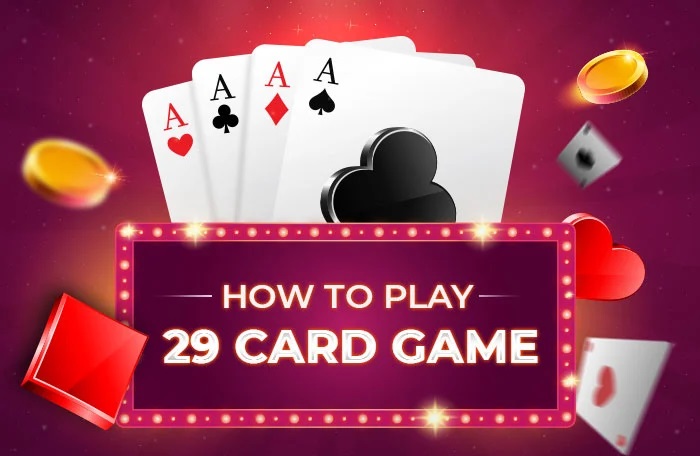The 29 card game, also known as Twenty-Nine, is a trick-taking card game that originated in South Asia, particularly in countries like India, Bangladesh, and Nepal. It has gained widespread popularity for its engaging gameplay and the strategic thinking it requires. If you’re new to this game, understanding the 29 card game rules is essential to fully enjoy the experience.
Understanding the 29 Card Game Rules
The 29 card game is played with a standard deck of 32 cards, which includes the 8s, 9s, 10s, jacks, queens, kings, aces, and 7s from each suit. It is typically played by four players divided into two teams. The objective of the game is to win tricks and accumulate points by capturing high-ranking cards during each round.
Here’s a breakdown of the rules for playing the 29 card game:
1. Card Rankings and Points: In 29, the cards have a unique ranking system. The highest-ranking cards in the game are:
– Jacks (3 points)
– Nines (2 points)
– Aces (1 point)
– Tens (1 point)
All other cards—kings, queens, and eights—carry no point value. The total number of points available in the game is 28, which is why the game is called “29.”
2. Bidding: Before the game begins, players must bid to determine how many points their team will attempt to win. The bidding starts with a minimum of 16 points, and players take turns increasing their bids. The team with the highest bid must achieve at least that number of points during the game.
3. Trump Suit: After the bidding phase, the player who wins the bid selects a trump suit. The trump suit is the most powerful suit in the game, and cards from this suit can beat any card from other suits.
4. Gameplay: The game proceeds with each player playing one card per round, also known as a “trick.” The player who leads the trick can play any card, and other players must follow the same suit if possible. If a player doesn’t have a card in the same suit, they can play any other card, including a trump card. The highest-ranking card in the lead suit or the trump suit wins the trick.
5. Scoring: At the end of the game, teams tally their points based on the cards they’ve captured. If the bidding team meets or exceeds their bid, they score positively. If they fail to achieve their bid, the opposing team scores the difference.
Strategy and Skill in the 29 Card Game
While the rules of the 29 card game may seem straightforward, mastering the game requires strategic thinking and careful coordination with your partner. Here are some essential strategies to improve your chances of winning:
– Bid Wisely: When bidding, don’t overestimate your team’s ability to win points. It’s better to aim for a lower bid and ensure you meet it rather than overbidding and losing points.
– Communicate with Your Partner: Since the game is played in teams, it’s crucial to understand your partner’s play style. Subtle signals through your card choices can help your partner understand which cards you hold.
– Manage the Trump Suit: If you’re the player who won the bid, choosing the right trump suit can significantly impact the game. Consider which suit gives your team the best chance of winning tricks.
– Pay Attention to the Opponents: Keep track of the cards played by your opponents to anticipate their strategy. Knowing which suits they’re short on can help you decide when to play your trump cards.
Popular Card Games Beyond 29
While the 29 card game is a beloved classic in many regions, card games offer a vast array of experiences for players of all ages and skill levels. Whether you’re looking for a strategic challenge or a fun, family-friendly game, there’s a card game out there for everyone. One of the most popular card game categories across the world is **Rummy**.
An Introduction to Rummy
Rummy is a group of matching-card games that are played in various forms across the globe. The main objective of rummy games is to form sets or runs of cards, either by collecting cards of the same rank or by creating a sequence of consecutive cards of the same suit.
Rummy has many different variations, each with its own set of rules, but they all share the same basic goal: to arrange your cards into valid sets and sequences before your opponents do. The game typically requires between two and six players and is played with one or more decks of cards, depending on the variation.
Basic Rummy Gameplay
While the specific rules may vary depending on the type of rummy being played, here is a general overview of how most rummy games are played:
1. Dealing the Cards: At the beginning of a rummy game, each player is dealt a specific number of cards. The remaining cards form a draw pile, and the top card is placed face-up to start the discard pile.
2. Forming Sets and Sequences: Players take turns drawing a card from either the draw pile or the discard pile, then discarding a card. The goal is to arrange your cards into sets (three or four cards of the same rank) or sequences (three or more consecutive cards of the same suit).
3. Going Out: Once a player has successfully arranged all of their cards into valid sets and sequences, they can go out, signaling the end of the game. The remaining players then tally the value of the cards they were unable to arrange, and points are awarded accordingly.
4. Winning the Game: In most rummy variations, the player with the lowest point total at the end of several rounds wins the game.
Different Types of Rummy Card Games
Rummy has evolved into many different versions over time, with some variations being more popular in specific regions. Here are some of the most well-known types of rummy card games:
1. Gin Rummy: One of the most famous rummy variations, Gin Rummy is typically played between two players. The goal is to form valid sets and sequences while minimizing the point value of unmatched cards in your hand. Players score points based on the difference between their hand and their opponent’s hand when someone goes out.
2. Indian Rummy: A favorite in South Asia, Indian Rummy is played with two decks of cards and involves forming sets and sequences. Players must have at least two sequences, one of which must be a pure sequence (without a joker), to declare their hand and win the game.
3. Kalooki Rummy: Kalooki is a variation of rummy that is especially popular in Jamaica and Eastern Europe. Players aim to form sets and sequences, and jokers can be used as wild cards to substitute for any card. The game is played in multiple rounds, and players accumulate points throughout the game.
4. 500 Rummy: In this variation, the game is played with a point system, where players score points for forming sets and sequences during their turn. The first player to reach 500 points wins the game. The ability to draw multiple cards from the discard pile adds a layer of strategy to this rummy variation.
Each of these types of rummy card games offers a unique experience, combining skill, strategy, and luck. Whether you’re a seasoned player or a beginner, the world of rummy is full of exciting possibilities to explore.





Be First to Comment